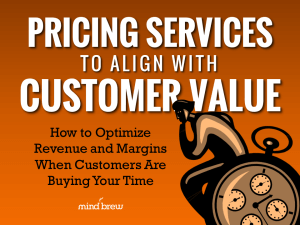Somewhere, there’s a product manager trying to get her company to recognize the importance of proactive value management. Elsewhere, there’s a sales director trying to get his company to invest in more efficient quoting tools. And somewhere else, there’s a pricing manager trying to get approval for a solution to optimize their company’s price lists.
How are they going about it? The typical approach might look familiar:
- The change agent identifies a problem. And, once they realize the magnitude of the problem, they can’t help but set their sights on fixing it. It’s just how change agents are wired—it’s in their DNA.
- They then explore a bunch of different options for solving the problem. They research what others have done. They take a look at what it would take to address the problem internally. They evaluate various external solutions—training, consultants, software, and so on.
- After identifying the best solution to the problem, they set about trying to get internal support for that solution. In effect, they try to “sell” the solution they’ve identified to the rest of their organization. They hold meetings and present the solution to the various stakeholders. They put together ROI and payback projections in an attempt to get budget approvals.
- Then, if they can keep up the pressure for many months—or even years—the powers-that-be may finally, and reluctantly, say yes. Mostly likely, though, somewhere along the way the change agent will be told that the project or initiative will have to wait until next year. And, after a year has passed the internal sales process will begin all over again.
This somewhat “standard” approach makes intuitive sense to most people. In fact, this approach seems so natural that most people end-up using it by default without even realizing it.
But is it the right approach? Is it the most effective way to champion change?
An informative guide in the PricingBrew Journal says that this approach fails more often than it succeeds because it doesn’t recognize how groups of humans process new information, make decisions, and deal with disruptive change. The guide then goes on to advocate a different approach—one that essentially leads the stakeholders to draw the conclusions on their own.
So…what if getting our organizations to change their ways really isn’t as difficult as we’ve been come to believe? What if the status quo really isn’t as entrenched as it appears to be? What if we’ve just been going about it the wrong way?













